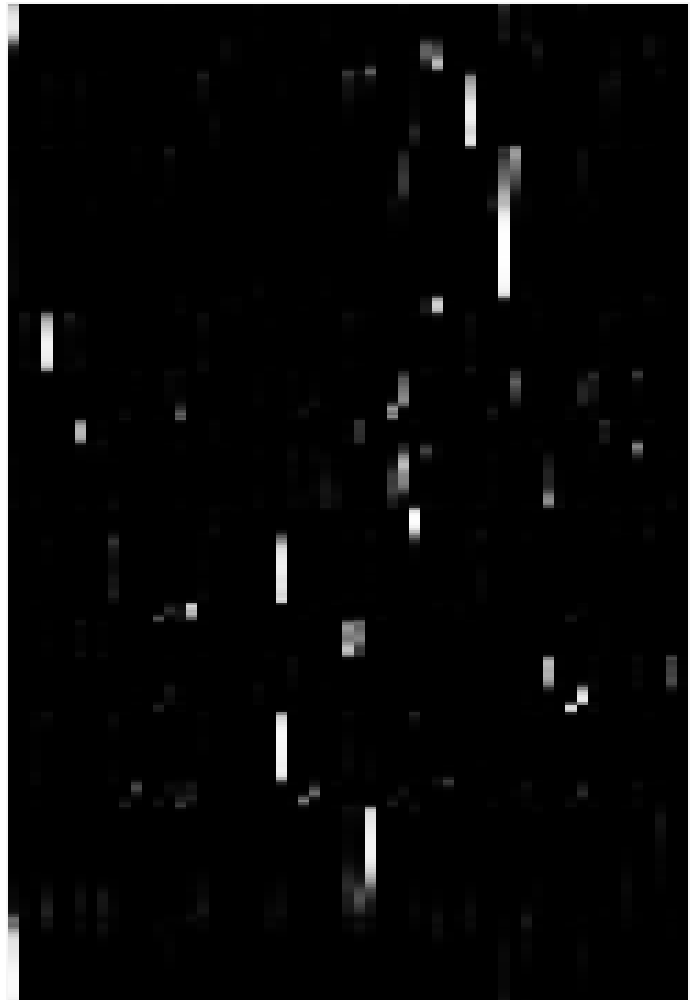# deep-voice-conversion
**Repository Path**: heimu11/deep-voice-conversion
## Basic Information
- **Project Name**: deep-voice-conversion
- **Description**: Deep neural networks for voice conversion (voice style transfer) in Tensorflow
- **Primary Language**: Python
- **License**: MIT
- **Default Branch**: master
- **Homepage**: None
- **GVP Project**: No
## Statistics
- **Stars**: 0
- **Forks**: 0
- **Created**: 2019-07-04
- **Last Updated**: 2020-12-19
## Categories & Tags
**Categories**: machine-learning, tts
**Tags**: None
## README
# Voice Conversion with Non-Parallel Data
## Subtitle: Speaking like Kate Winslet
> Authors: Dabi Ahn(andabi412@gmail.com), [Kyubyong Park](https://github.com/Kyubyong)(kbpark.linguist@gmail.com)
## Samples
https://soundcloud.com/andabi/sets/voice-style-transfer-to-kate-winslet-with-deep-neural-networks
## Intro
What if you could imitate a famous celebrity's voice or sing like a famous singer?
This project started with a goal to convert someone's voice to a specific target voice.
So called, it's voice style transfer.
We worked on this project that aims to convert someone's voice to a famous English actress [Kate Winslet](https://en.wikipedia.org/wiki/Kate_Winslet)'s
[voice](https://soundcloud.com/andabi/sets/voice-style-transfer-to-kate-winslet-with-deep-neural-networks).
We implemented a deep neural networks to achieve that and more than 2 hours of audio book sentences read by Kate Winslet are used as a dataset.

## Model Architecture
This is a many-to-one voice conversion system.
The main significance of this work is that we could generate a target speaker's utterances without parallel data like , or , but only waveforms of the target speaker.
(To make these parallel datasets needs a lot of effort.)
All we need in this project is a number of waveforms of the target speaker's utterances and only a small set of pairs from a number of anonymous speakers.

The model architecture consists of two modules:
1. Net1(phoneme classification) classify someone's utterances to one of phoneme classes at every timestep.
* Phonemes are speaker-independent while waveforms are speaker-dependent.
2. Net2(speech synthesis) synthesize speeches of the target speaker from the phones.
We applied CBHG(1-D convolution bank + highway network + bidirectional GRU) modules that are mentioned in [Tacotron](https://arxiv.org/abs/1703.10135).
CBHG is known to be good for capturing features from sequential data.
### Net1 is a classifier.
* Process: wav -> spectrogram -> mfccs -> phoneme dist.
* Net1 classifies spectrogram to phonemes that consists of 60 English phonemes at every timestep.
* For each timestep, the input is log magnitude spectrogram and the target is phoneme dist.
* Objective function is cross entropy loss.
* [TIMIT dataset](https://catalog.ldc.upenn.edu/ldc93s1) used.
* contains 630 speakers' utterances and corresponding phones that speaks similar sentences.
* Over 70% test accuracy
### Net2 is a synthesizer.
Net2 contains Net1 as a sub-network.
* Process: net1(wav -> spectrogram -> mfccs -> phoneme dist.) -> spectrogram -> wav
* Net2 synthesizes the target speaker's speeches.
* The input/target is a set of target speaker's utterances.
* Since Net1 is already trained in previous step, the remaining part only should be trained in this step.
* Loss is reconstruction error between input and target. (L2 distance)
* Datasets
* Target1(anonymous female): [Arctic](http://www.festvox.org/cmu_arctic/) dataset (public)
* Target2(Kate Winslet): over 2 hours of audio book sentences read by her (private)
* Griffin-Lim reconstruction when reverting wav from spectrogram.
## Implementations
### Requirements
* python 2.7
* tensorflow >= 1.1
* numpy >= 1.11.1
* librosa == 0.5.1
### Settings
* sample rate: 16,000Hz
* window length: 25ms
* hop length: 5ms
### Procedure
* Train phase: Net1 and Net2 should be trained sequentially.
* Train1(training Net1)
* Run `train1.py` to train and `eval1.py` to test.
* Train2(training Net2)
* Run `train2.py` to train and `eval2.py` to test.
* Train2 should be trained after Train1 is done!
* Convert phase: feed forward to Net2
* Run `convert.py` to get result samples.
* Check Tensorboard's audio tab to listen the samples.
* Take a look at phoneme dist. visualization on Tensorboard's image tab.
* x-axis represents phoneme classes and y-axis represents timesteps
* the first class of x-axis means silence.

## Tips (Lessons We've learned from this project)
* Window length and hop length have to be small enough to be able to fit in only a phoneme.
* Obviously, sample rate, window length and hop length should be same in both Net1 and Net2.
* Before ISTFT(spectrogram to waveforms), emphasizing on the predicted spectrogram by applying power of 1.0~2.0 is helpful for removing noisy sound.
* It seems that to apply temperature to softmax in Net1 is not so meaningful.
* IMHO, the accuracy of Net1(phoneme classification) does not need to be so perfect.
* Net2 can reach to near optimal when Net1 accuracy is correct to some extent.
## References
* ["Phonetic posteriorgrams for many-to-one voice conversion without parallel data training"](https://www.researchgate.net/publication/307434911_Phonetic_posteriorgrams_for_many-to-one_voice_conversion_without_parallel_data_training), 2016 IEEE International Conference on Multimedia and Expo (ICME)
* ["TACOTRON: TOWARDS END-TO-END SPEECH SYNTHESIS"](https://arxiv.org/abs/1703.10135), Submitted to Interspeech 2017


